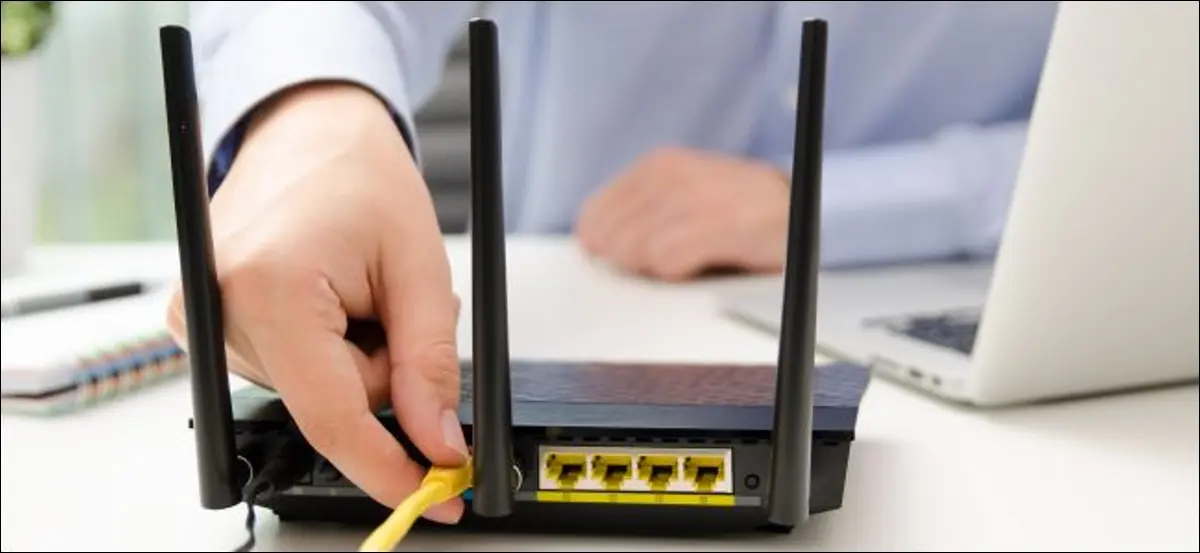

Once you’ve given someone your Wi-FI password, they have unlimited access to your Wi-Fi, and they can join your network on all their devices. That’s how it usually works, anyway. Here’s how to boot them off.
Option 1: Change Your Wi-Fi Password
The easiest, most secure method is merely changing your Wi-Fi network’s password on your router. This will forcibly disconnect all devices from your Wi-Fi network—even your own. You’ll have to reconnect to the Wi-Fi network by entering the new password on all your devices. Anyone who doesn’t have your new password won’t be able to connect.
Let’s be honest: If you have a lot of devices, reconnecting them all will be a pain. But it’s also the only real, foolproof method. Even if you’re capable of blacklisting a device on your router so it can’t reconnect, someone with your Wi-Fi password could connect on a new device. (And, even if they don’t remember the password, there are ways to recover saved Wi-Fi passwords on Windows PCs and other devices.)
To do this, you’ll need to access your router’s configuration settings—usually in a web interface—sign in, and change the Wi-Fi password. You can change the Wi-Fi network’s name while you’re at it, too. We’ve got a guide to accessing your router’s web interface, and you can also perform a web search for your router’s name and model number to find the manufacturer’s manual and official instructions. Look for a “Wireless” or “Wi-Fi” section in your router’s options.
This all assumes you’ve set a password on your router! Ensure you enable secure encryption (WPA2) and set a strong passphrase. If you’re hosting an open Wi-Fi network, anyone will be able to connect.

Option 2: Use MAC Address Filtering on Your Router
Some routers have access control features that can manage which devices are allowed to connect. Each wireless device has a unique MAC address. Some routers let you blacklist (ban) devices with a certain MAC address from connecting. Some routers let you set a whitelist of only approved devices and prevent other devices from connecting in the future.
Not all routers even have this option. Even if you can use it, it’s not entirely secure. Someone with your Wi-Fi passphrase could change their device’s MAC address to match an approved one and take its place on your Wi-Fi network. Even if no one does, you’ll have to manually enter MAC addresses when connecting new devices or an attacker will just be able to connect at any time—it doesn’t seem ideal.
For all these reasons, we recommend against using MAC address filtering.
But, if you just want to temporarily kick a device off temporarily—perhaps your kids’ device—and you’re not concerned about them getting around the block, this could be a good method.
You’ll have to dig around in your WI-Fi router’s settings to see if it even supports something like this. For example, on some Netgear routers, this is named the “wireless card access list.” On other Netgear routers like the Nighthawk, the access control feature just controls access to the internet—blocked devices can still connect to Wi-Fi but are denied internet access. Google Wifi routers let you “pause” internet access to devices, but this won’t kick them off your Wi-Fi.
Option 3: Use a Guest Network in the First Place
If you’re giving a guest access to your Wi-Fi network, you can make this process much easier on yourself by setting up a guest Wi-Fi network on your router. The guest network is a separate access network. For example, you could have a network “Home Base” and another one named “Home Base – Guest.” You’ll never give your guests access to your main network.
Many routers offer this feature, calling it a “guest network” or “guest access” in their settings. Your guest network can have an entirely separate password. If you ever need to change it, you can just change the guest network password without changing your primary network password and kicking your own devices off.
Guest networks can often be “isolated” from your main network, too. Your guest’s devices won’t have access to file shares on your computers or other network-connected resources if you enable “isolation” or disable “allow guests access to local network resources,” or whatever the option is called.
Once again, you’ll have to dig into your router’s settings to see if it has a “guest network” feature. However, guest networks are much more common than access control lists.

If You Can Access the Device Connecting to Wi-Fi
In the unlikely case that you have access to someone’s device and they haven’t set a password or can’t stop you, you can remove the saved password. For example, you can tell an iPhone to forget the network or delete the saved Wi-Fi network profile on Windows.
Assuming you have access to the person’s device and they haven’t remembered or written down your Wi-Fi password, this will solve your problem. They can’t reconnect on that device unless they re-enter the password. Of course, they could view it on any other devices they have access to where the password is saved.

What About Software that Kicks People Off Your Wi-Fi?
Search the web for this topic, and you’ll discover people recommending software like Netcut or JamWifi, which can send packets to other devices on your Wi-Fi network telling them to disconnect.
These software tools are basically executing a Wi-Fi deauthorization attack to temporarily boot a device from your Wi-Fi network
This isn’t a real solution. Even after you deauthorize a device, it will still keep trying to connect. That’s why some tools can continuously send “deauth” packets if you leave your computer on.
This isn’t a real way of permanently removing someone from your network and forcing them to stay disconnected.









